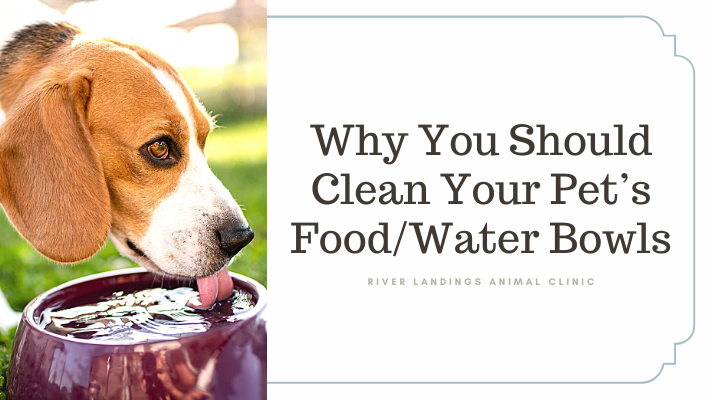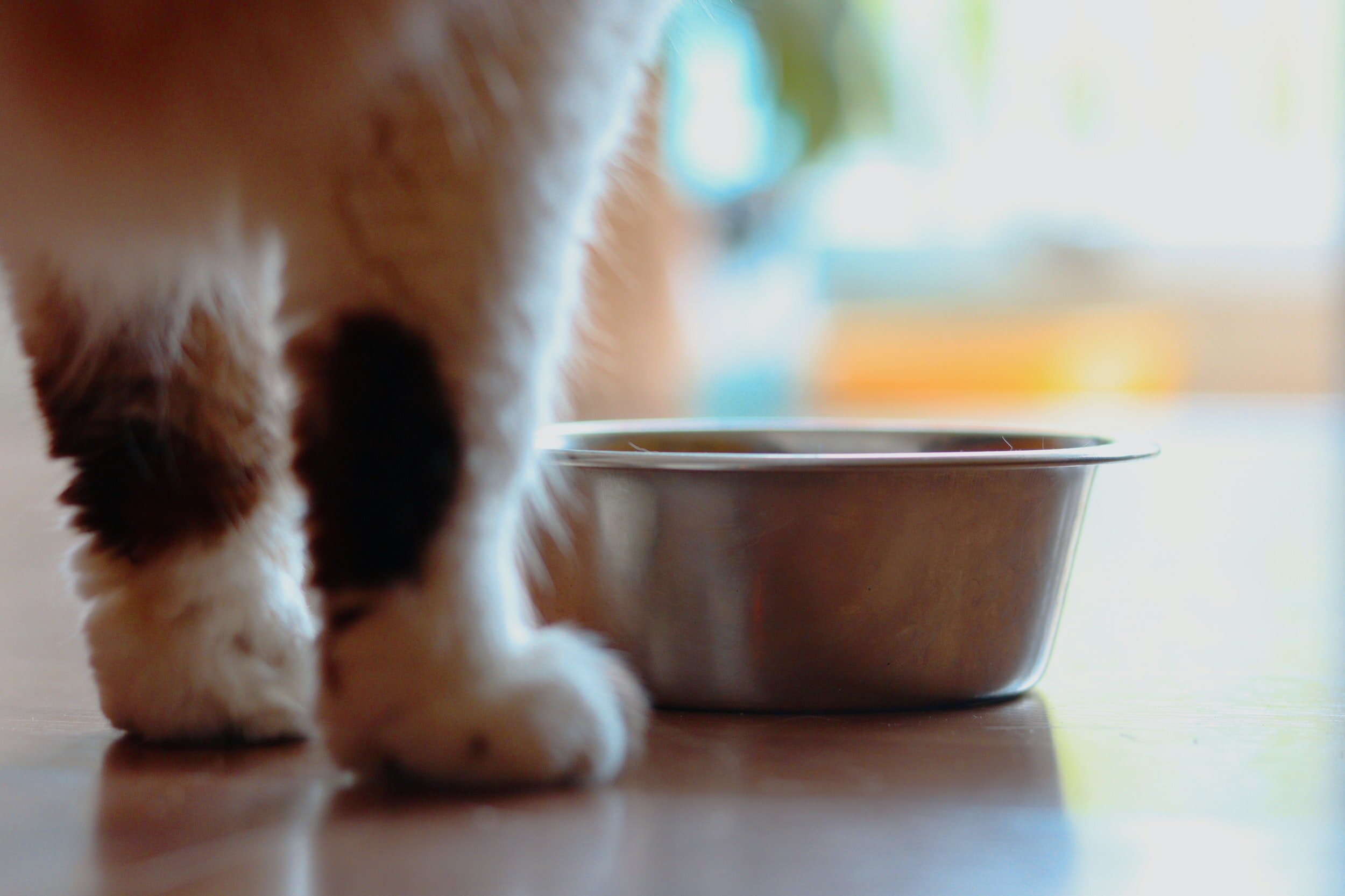Did you know your pet's food and water bowls are a hot spot of risk? Dirty food and water bowls can lead to parasites, affecting your pets and household. In the context of hygiene, pet food bowls are definitely an important part of your cleaning routine to be meticulous about.
We will cover a variety of things:
Good Hygiene & Safety Measures
Where Do the Bugs Come From?
Zoonotic diseases are diseases that normally infect an animal, but poses a risk to people.
The most common zoonoses with regard to food and water bowls are salmonella, campylobacter, and worms.
These bugs have different mechanisms of causing infection, but they can all be shed into the environment through feces and travel indoors on the pet’s paws or coat.
When your pet licks their fur and then eats from a bowl, this can spread infection onto an object you touch. When you pick up the bowl, you run the risk of getting that same bug on your hands.
Also, with salmonella, the food itself may contain bacteria, with raw meat and eggs posing a special risk. We normally rely on thorough cooking to kill salmonella, so feeding a raw diet to your pet increases the risk.
Food Hygiene
Knowing raw meat could contain salmonella should make you think twice about where you store it.
It should be refrigerated (below 40° F) to slow down the growth of contaminating bacteria. Avoid storing raw meat or any pet food immediately beside human food. Make sure it’s securely wrapped and put in a different section of the fridge whenever possible.
The longer food sits in the open at room temperature, the greater the chance of bacterial contamination and multiplication. With this in mind, serve only the portion your pet can eat in one go so that food isn’t left sitting around. To streamline this and avoid the risks, buy packs of moist food in smaller sizes so you can throw unopened food away rather than store open sachets for days.
Related: Salmonella Infection in Pets & People and Zoonotic Diseases
What’s the Safest Way to Wash Bowls?
Wash them every day: Rinse them under running water and either hand-wash them in hot soapy water or put them on the top rack of the dishwasher (so the dishwasher’s heat doesn’t melt plastic dishes).
When hand-washing, do the pet’s dishes last, using a separate sponge or scourer kept just for the pet’s things. Make the water as hot as you can stand without burning yourself and use liquid or detergent soap. Rinse them well — your pets won’t enjoy a soapy aftertaste, and there’s a slim chance it could make them ill.
Fresh drinking water must be available for your pet at all times, so have at least 2 sets of everything so you have one bowl that’s clean and full of water for your pet while you are cleaning the other one.
Other Safety Measures
Always keep separate utensils for the pet’s food, such as serving spoons, forks, or scoops. Never use the pet’s things (toys, bowls, etc.) as a scoop.
Although some pets have nasty tummy upsets as a result of salmonella and campylobacter—not all do. Some pets are carriers, meaning the bug is in their system—they’re not ill, but they excrete it in their waste. Some of those bacteria (and also worm eggs) get onto the pet’s coat and then onto your hands when you stroke them. Delightful imagery, right? Wash! Your! Hands!
4 Ways Your Dog’s Water Can Make Them Sick
Your dog’s water bowl is the 3rd most germ-laden place in the house!
We all know clean and fresh water is vital for good health. With this in mind, you probably top up the bowl every time it goes down.
But as it happens, this isn’t sufficient to ensure good health. Merely topping up the water level does nothing to control harmful bacteria or even toxins that can be lurking in the water. Not only are these bugs unpleasant, but also they can cause illness in people, especially those with weak immune systems. So what bugs could be lurking in your pet's water bowl? Surprisingly, quite a few!
1. Giardia
This single-celled parasite may be better known to you as “traveler’s diarrhea.” It can infect people too—not just your pets.
Giardia is shed in feces inside a hardy oocyst. The latter is tough and can survive for long periods of time in warm, humid conditions, and thrives in water.
When a dog drinks infected water, the parasite passes into its gut. Some dogs show no symptoms, but others can develop sickness and weight loss in addition to diarrhea.
A diagnosis is made by examining a fecal sample under a microscope. Most cases respond well to 3-10 days of medication tailored to your pet.
Related: How do pets and people become infected with Giardia?
2. Cryptosporidium
Cryptosporidium is similar to giardia but a whole lot tougher. It’s so tough that it can survive chlorine treatment. Similar to giardia, oocysts are passed in feces that, if they get into the water, are a source of infection for animals and birds.
Your vet will prepare a treatment of fenbendazole or metronidazole to kill the parasite in the gut.
Bathe and shampoo the dog on the last day of treatment to wash away any oocysts clinging to the coat. Not doing so risks reinfection should the dog lick their fur.
Related: What Can I Catch From My Dog?
3. Leptospirosis
Leptospirosis is a particularly nasty infection with the potential to kill. It’s also a devious infection because signs can range from mild stomach upsets that last for weeks to months to an acute liver and kidney failure that are fatal in hours.
Other symptoms include:
Fever
Muscle weakness
Blood in the urine
Loss of appetite
Vomiting
Diarrhea
Collapse due to organ failure
Leptospirosis can be spread by rat urine and especially loves water sources such as standing water, puddles, and birdbaths. The unpredictable nature of leptospirosis means prevention is the best policy.
Luckily, there are vaccines available for your dog. If you live in a risk area for lepto, then your vet will advise giving the vaccine. A word of caution, though: The vaccine must be given yearly, as immunity is often gone completely 12 months after the previous dose.
Humans, however, don’t yet have a vaccine. Did you know pets can pass lepto to people? If your dog shows similar symptoms to those above and you feel unwell, see your physician as a matter of urgency.
Related: You and Your Pet Are at Risk For Leptospirosis
4. Blue-Green Algae
You may be aware that dogs shouldn’t swim in water with an obvious algal bloom—but do you know why?
Cyanobacteria, also known as blue-green algae, are a toxin-producing form of bacteria. This toxin can affect any mammal (yes, including people), causing nerve and liver damage.
Signs of toxicity include:
Weakness
Muscle tremors
Drooling
Vomiting
Diarrhea
Breathing difficulties
Collapse and death
There is no antidote to blue-green algae poisoning. Treatment includes rinsing out the stomach to remove contamination and supportive care with intravenous fluids.
So don’t let your dog swim in dirty water or drink from containers of “old” water — give them the fresh stuff.
Related: How Red Tide Affects Your Pet
Biofilms on Your Pet’s Water Bowl Are Bad
Spot the biofilm in your pet’s water bowl.
Does your dog or cat have a stainless steel drinking bowl? Next time you rinse the bowl under the tap, look for that misty, smoky layer covering the metal.
If you can’t see it, try wiping your finger across the wet metal surface. If your fingertip leaves a clean streak in its path, then you’re looking at a biofilm.
The definition of a biofilm is: “A thin but robust layer of mucilage adhering to a solid surface and containing a community of bacteria and other microorganisms.” So, basically a thin layer of stickiness rich in bacteria that coats a surface. Yum!
You will have experienced a biofilm for yourself the last time you skipped brushing your teeth. Do you know that unpleasant stickiness that coated your teeth? Well, this is a biofilm made up of mucin, which is a mucous-like glue and bacteria combination.
When water comes into contact with a biofilm, it then becomes a weak bacterial soup. When the pet drinks that water, it’s tantamount to challenging their immune system to a duel. If the dog is very young, elderly, or on immune-suppressive drugs, then there’s a risk of them becoming ill.
Ditch The Plastic!
Plastic is riddled with risks.
Plastic bowls have more than their fair share of problems when it comes to drinking water.
The plastic surface is easily scratched, which provides inviting nooks and crannies for bugs to hide in.
But more than this, plastic bowls are made of chemicals. One in particular, p-benzyl hydroquinone, inhibits the production of melanin (dark pigment).
It’s melanin that gives a black, leathery nose its rich, deep color. When a nose has regular contact with p-benzyl hydroquinone, such as when the dog drinks, it can cause depigmentation. This can lead to a black nose turning mottled or patchy-looking.
Just think—if this substance can do this to the outside of the body, what’s it doing to the inside?
We know that BPA (a chemical that hardens plastic) can interfere with the production of natural hormones in the body. In people, BPAs are linked to diabetes, impaired brain function, and cancer. When you think about how small dogs and cats are compared to people, the dose of BPA they get must be relatively higher.
Micro-Cracks Lurk in Ceramic Bowls
Surely, a good, heavy-duty ceramic bowl is better, right? Yes and no.
Ceramic bowls aren’t regulated in terms of what goes into making them. There is concern that some originating from China contain lead. Lead is a toxic substance that causes destruction of the red blood cells and nerve damage and is generally a substance best avoided.
In addition, the glaze on a ceramic bowl is subject to microfractures. This is called “crazing” within the glaze and can be seen on a microscopic level.
Scientists investigating biofilms found them to be just as bad on ceramic bowls as plastic. They suspect this ultra-fine crazing somehow provides “grip” for the microfilm to stick to.
Stainless Steel Is Best
The hands-down winner when it comes to drinking bowls is stainless steel. However, this is only if they are washed regularly, preferably on a daily basis.
Even a stainless steel bowl builds up a biofilm if it’s not washed properly. Get into the habit of washing your dog’s water bowl daily, preferably with hot, soapy water or by putting it through the dishwasher.
Don’t be tempted to merely top up the water level— this is feeding the bacterial soup. For optimal health for your pets (and family) choose stainless steel and empty it out daily, wash it with hot, soapy water, rinse and fill with fresh water.
Hear From Us Again
Don't forget to subscribe to our email newsletter for more recipes, articles, and clinic updates delivered straight to your e-mail inbox.
Related Categories:







